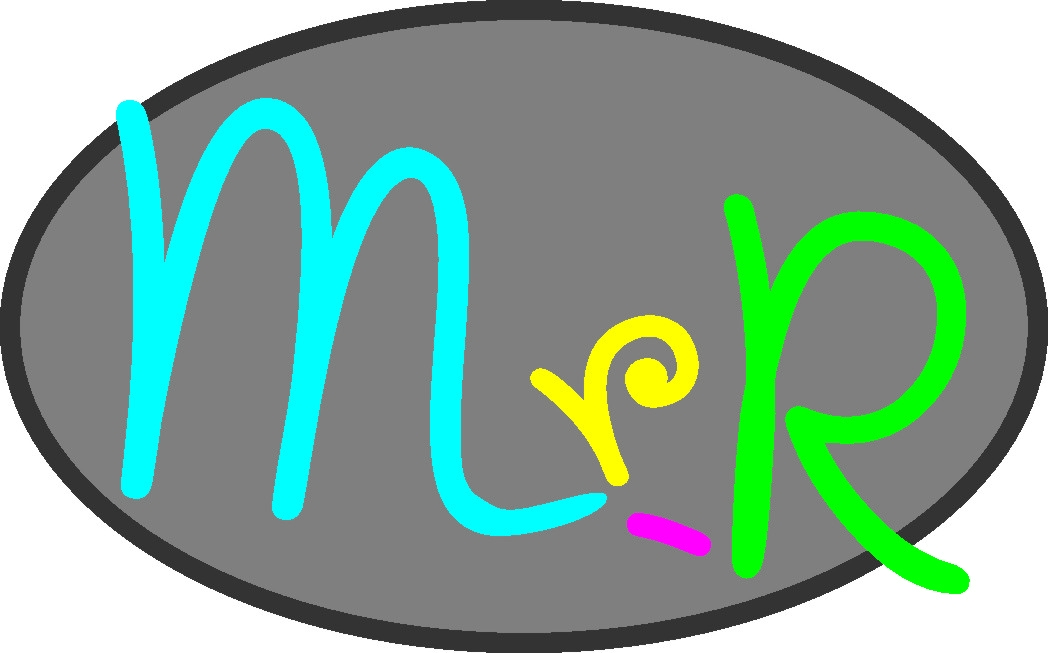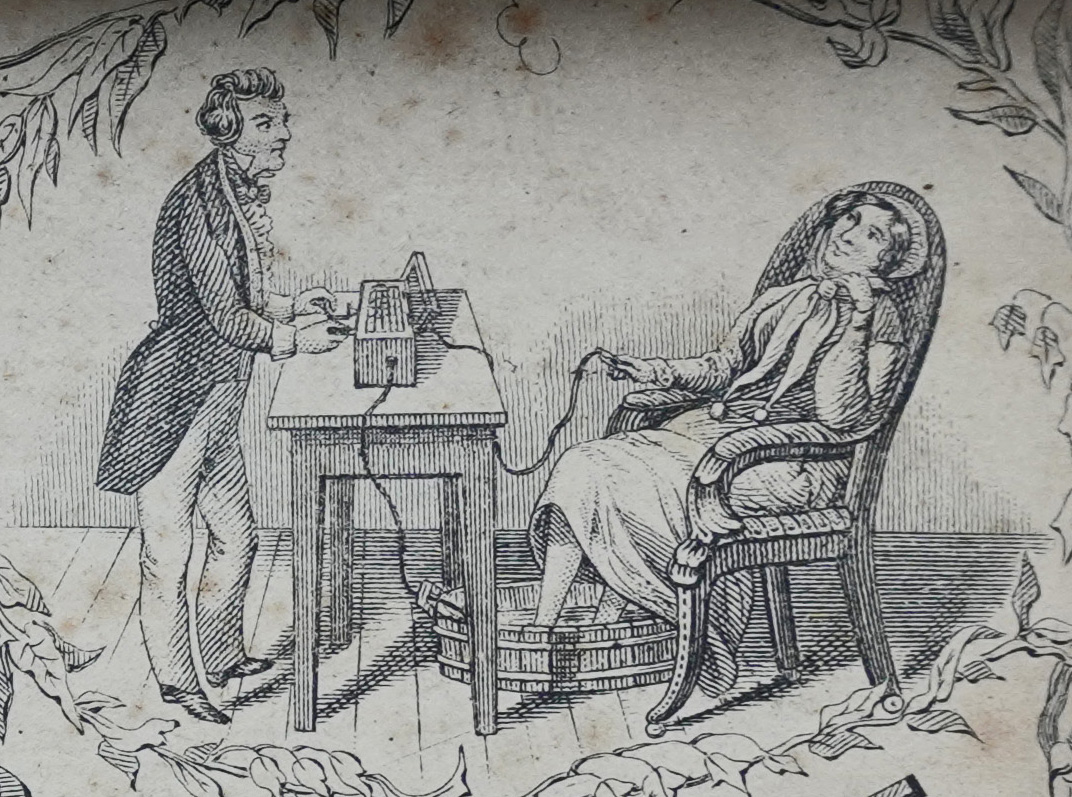
Shocking treatment or electrotherapy as an idea for treating illness goes back to the time when the apparatus to generate electricity was first constructed, at first using static then later, current electricity. In spite of many claims, there seems to be no firm evidence that any of these procedures has a beneficial effect and they may well fall into the category of quackery!
I present below two “instruments of torture” I have in my possession.
“Improved Magneto-Electric Machine for Nervous Diseases”
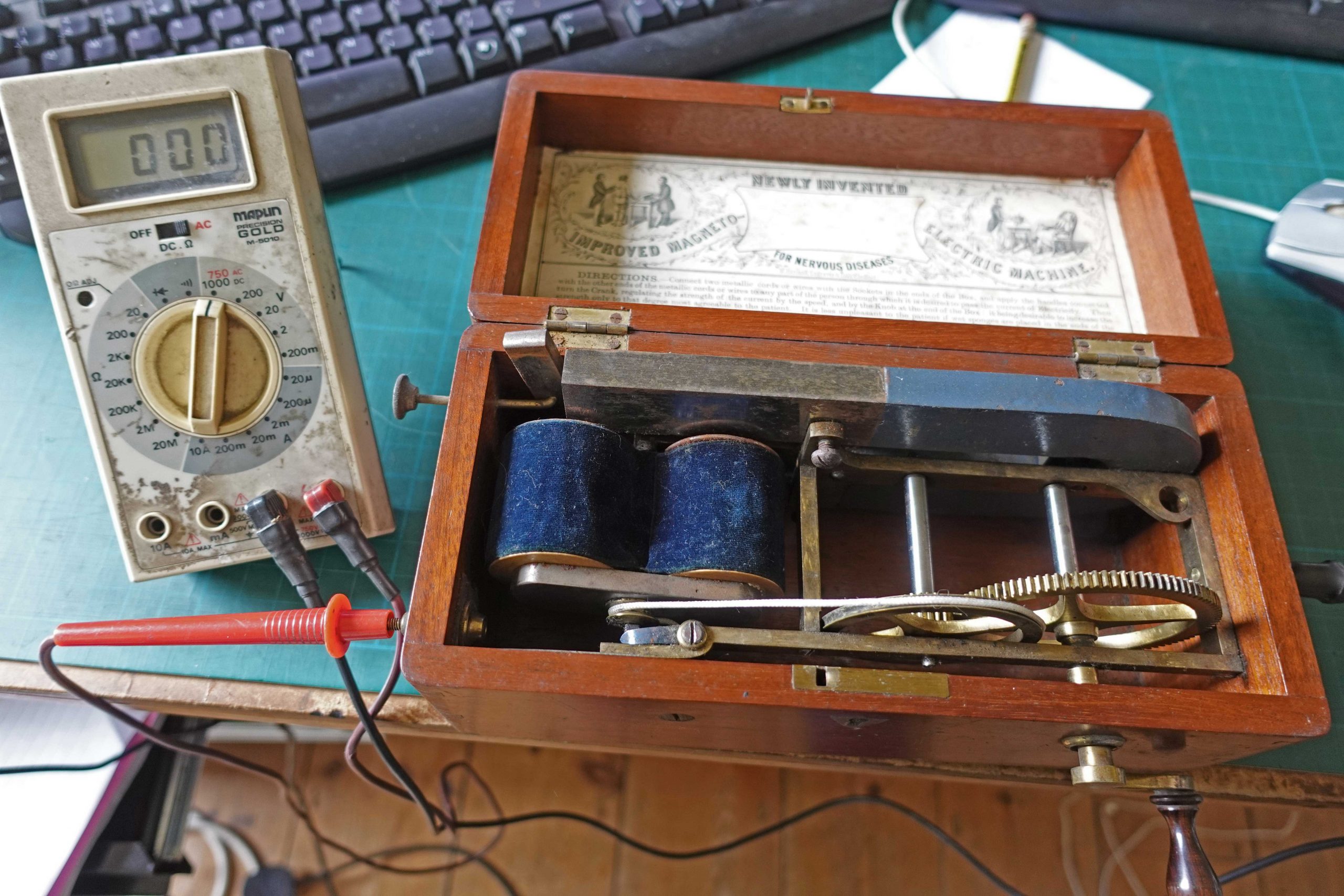
A magneto is an a electricity generator using a permanent magnet rotating past coils or in this case coils rotating past a fixed permanent magnet. When you turn the crank handle, the coils spin and a high AC voltage is generated in the coils which are under the rather fetching blue velvet covering. I attempted to measure the voltage and, open circuit, it was definitely above 1000 volts. Of course, when shorted across skin with a typical resistance of 20,000 Ohms this would drop considerably. Also, the current would be very low and not be enough to cause any harm.
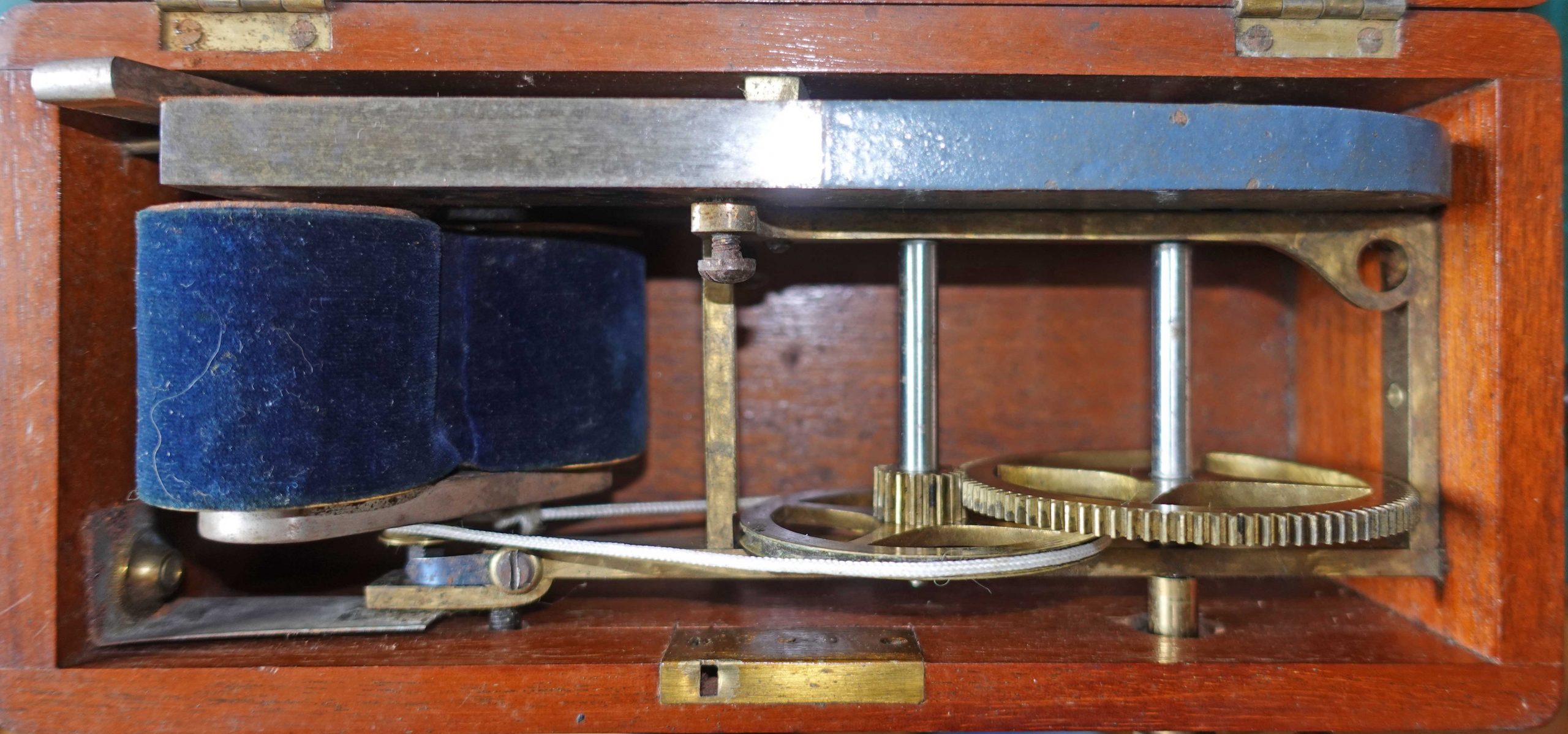
Don’t forget to carefully follow the instructions shown below!
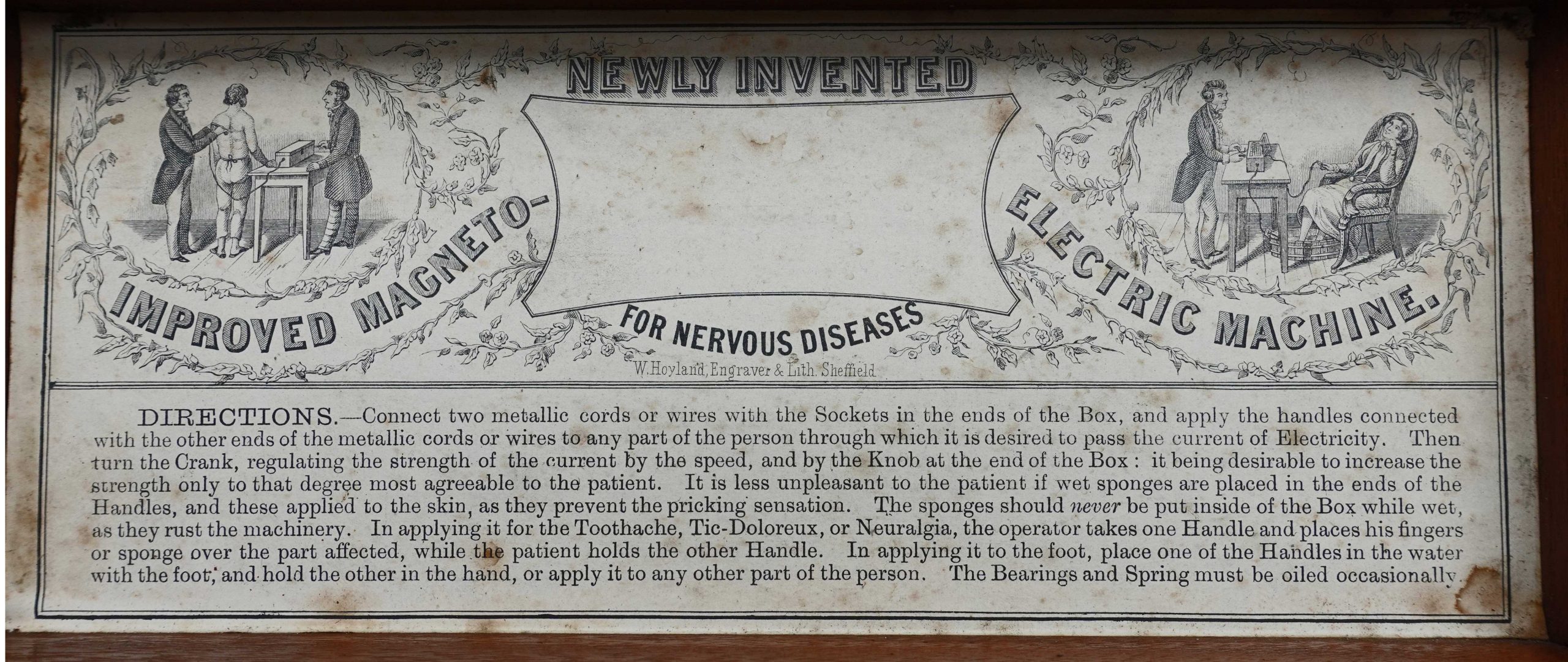
Ever Ready “Medical Coil”
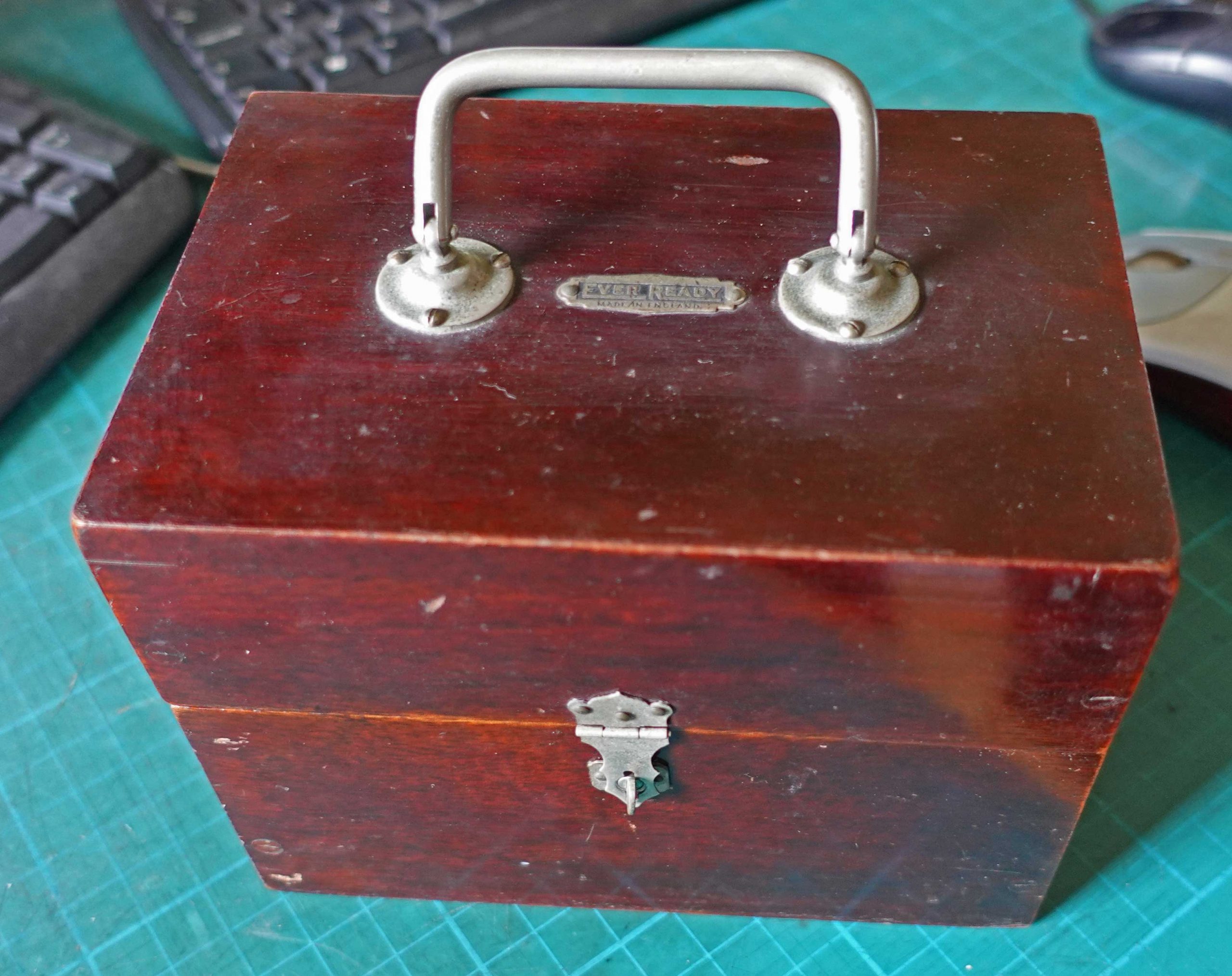
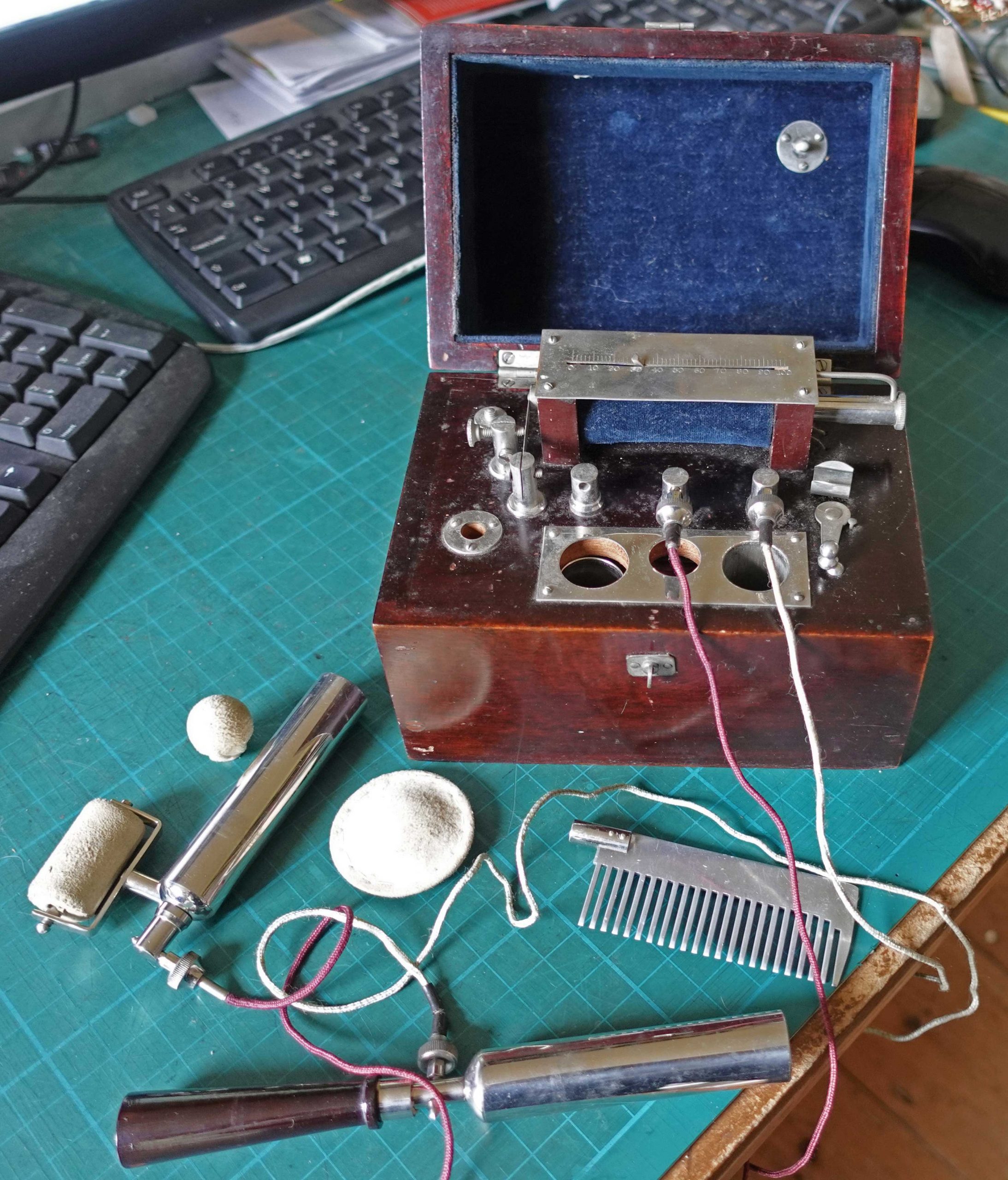
This medical coil generates its electricity the same way as a Ruhmkorff coil or induction coil. The coil has a primary winding with a small number of turns and a secondary winding with a large number of turns wound round an iron core. When a battery is connected to the primary the core becomes magnetised. This attracts part of a switch which breaks the connection between the battery and the primary. The magnetic field collapses and induces a high voltage in the secondary coil. This voltage can be applied to various parts of the body for “therapeutic” purposes by means of the various attachments shown in the picture. When the battery current is broken the switch closes again and the whole process repeats.
Other uses of the magneto and induction coil
The magneto and the induction coil are both used to provide an ignition spark in internal cobustion engines. Magnetos were common in the early days but these days they are restricted to engines in small pieces of equipment such as chain saws and strimmers. They are still used in aircraft engines because of their reliability. Induction coils replaced magnetos in car engines about 100 years ago for a number of reasons such as easier starting and latterly, their ability to be controlled by solid state and digital technology.
